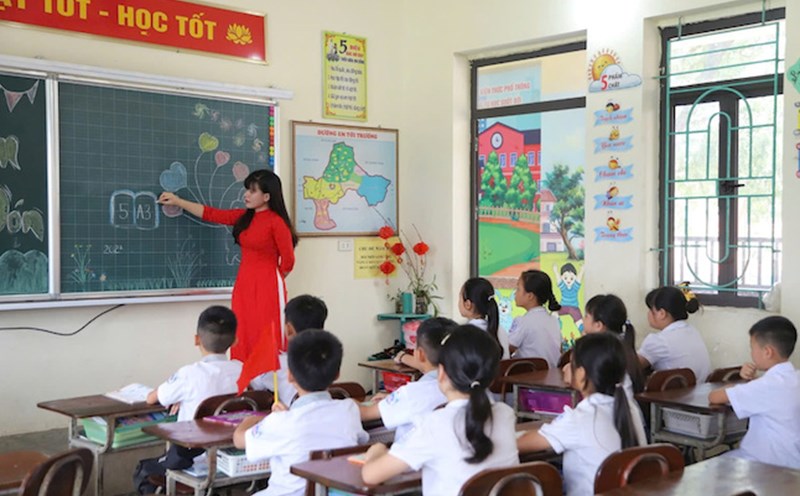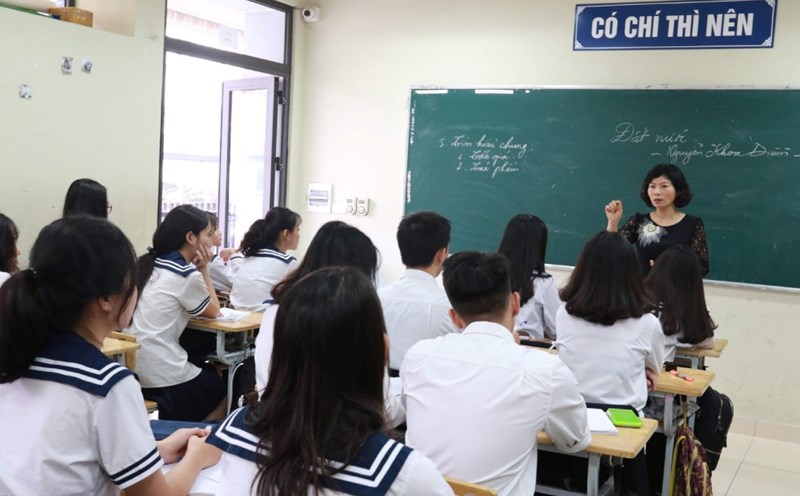The rearrangement of the organizational apparatus and network of educational institutions after the merger is posing a big demand for personnel management in the education sector.
In response to concerns about the risk of teacher cuts when implementing staff streamlining, the Ministry of Home Affairs affirmed: The staffing of civil servants in the education and health sectors will be kept stable, not reduced, to meet the requirements of implementing Resolutions No. 71 and 72 of the Politburo.
This content is emphasized in the document recently issued by the Ministry of Home Affairs regarding the guidance on the proposed staffing for the 2026-2031 period according to job positions. This document is accompanied by a set of principles and orientations sent to ministries, branches and People's Committees of provinces and cities to serve as a basis for unification in developing a staffing plan.
According to the new orientation, staff streamlining will be carried out according to the level of organizational arrangement. At the central level, merged units according to the summary of Resolution 18 must reduce the number of civil servants by 15%, while non-merged units must reduce by 5%.
In localities, unmerged provinces will have a 5% reduction in total staff; provinces formed on the basis of merging two units must reduce by 15%; and provinces merged with three or more units must reduce by 20%.
For the education sector, the staffing of civil servants will be kept stable to meet the requirements of implementing Resolution 71 of the Politburo.
Also related to the issue of teacher staffing and teacher arrangement after school mergers, the Ministry of Education and Training (MOET) has issued specific instructions. Accordingly, the arrangement of the network of educational institutions must be based on functions and tasks, ensuring inheritance and in line with the policy of streamlining the apparatus of the Politburo and the Secretariat.
Some outstanding principles include: Only merge kindergartens and general schools within one commune; Each commune must maintain at least one kindergarten, one primary school and one secondary school; Merge vocational education - continuing education centers according to a unified model.
At the same time, the Ministry of Education and Training requires localities to mobilize and arrange teachers based on job positions, ensuring balance between levels of education, avoiding local surplus - shortage.
Localities implementing the merger must ensure working conditions for the team, from public housing, means of transportation to information technology infrastructure. At the same time, policies related to streamlining, job transfer, retirement or termination of employment must be fully implemented and transparently.
The organization of mobilization, assignment and team arrangement will be directly implemented by the Department of Education and Training based on the actual needs of each locality.
With the spirit of maintaining stable staffing for teachers and clearly defining the principles of personnel arrangement after the merger, the new directives are expected to help reduce pressure on the education sector, while ensuring that the quality of teaching and learning as well as the rights of teachers and students in the transition period are not affected.
According to statistics from the Ministry of Education and Training, in the period of 2022-2026, the education sector will have 65,980 positions added by the Politburo. In the two school years 2022-2023 and 2023-2024, the whole country recruited more than 40,000 teachers. However, due to the continuous increase in the number of students and classes, the demand for teachers has also increased sharply (in the 2023-2024 school year, 13,676 more teachers are needed; in the 2024-2025 school year, about 22,000 more teachers are needed). Therefore, many localities still have a shortage of teachers.











